In the aftermath of World War II, an expedition was launched by the U.S. Navy that was directed towards Antarctica. Event though the mission itself and the units involved were not secret, the operation has since become embroiled in numerous conspiracy theories involving Nazis, UFOs and Antarctica. That mission was Operation Highjump.
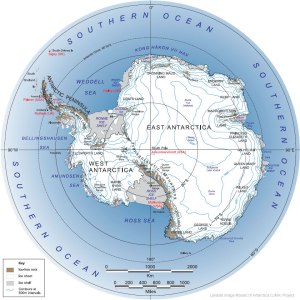
The stated goals of Highjump was that it would train personnel and test the equipment in extremely cold temperatures, to extend U.S. sovereignty over Antarctica (although this was eventually denied), determining the feasibility of establishing and maintaining a base in Antarctica, develop techniques for establishing air fields in such environments (it was hoped this information could be used in Greenland), to map as much of Antarctica by aircraft as possible (particularly the coastline) and to increase many fields of knowledge about Antarctica (such as meteorology and geology). Taking part in this operation were numerous ships broken up into three main groups, which formed together were called Task Force 68. The Central Group was comprised of the flagship Mount Olympus, the supply ships Yancey and Merrick, the submarine Sennet, and the icebreakers Burton Island and Northwind. The Eastern Group was comprised of the seaplane tender Pine Island, the destroyer Brownson, and the tanker Canisteo. The Western Group was comprised of the seaplane tender Currituck, the destroyer Henderson, and the tanker Cacapon. There was also a Carrier Group comprised of the Philippine Sea and a Base Group called Base Little America IV.
In command of Task Force 68 was Rear Admiral Richard H. Cruzen, although Rear Admiral Richard E. Byrd, the commander of the Carrier Group, was the “officer in charge” and would become the most famous and well-known individual involved with Operation Highjump. Byrd had graduated from the U.S. Naval Academy in 1912, and became a naval aviator in 1918. Throughout his career, Byrd had been instrumental in exploring Antarctica and the polar regions, and had already achieved successes in reaching the North Pole by aircraft (amongst other things).
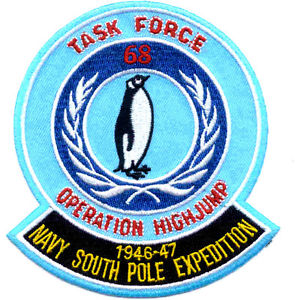
The entire Task Force 68 consisted of thirteen ships, multiple aircraft and four thousand men, and disembarked on December 2nd, 1946. The expedition was even filmed and made into a documentary called The Secret Land. By February of 1947, Task Force 68 hurriedly withdrew from Antarctica without much fanfare or public mention. Highjump was meant to last eight months, and yet it was called off in roughly two. What could have possibly happened to end such a large expedition so quickly?
At one point in December of 1946 a whiteout caused a Martin Mariner flying boat to crash, which resulted in the deaths of three airmen on board. Later, another individual was killed during an accident when equipment was being offloaded from a ship. However, three deaths in a known hostile environment couldn’t have been enough to cancel an entire operation. An interview was conducted with Admiral Byrd, which appeared in the Chilean newspaper El Mercurio on March 5th, 1947 that said:
Admiral Richard E. Byrd warned today that the United States should adopt measures of protection against the possibility of an invasion of the country by hostile planes coming from the polar regions. The admiral explained that he was not trying to scare anyone, but the cruel reality is that in case of a new war, the United States could be attacked by planes flying over one or both poles. This statement was made as part of a recapitulation of his own polar experience, in an exclusive interview with International News Service. Talking about the recently completed expedition, Byrd said the most important result of his observations and discoveries is the potential impact that they have in relation to the security of the United States.
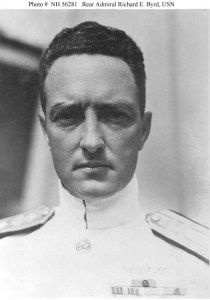
For Admiral Byrd to make such statements after such a large and well-equipped expedition was cut short seems very strange. For example, Byrd references enemy aircraft both coming from the poles and flying over them. At the time, no nation had established military bases in either the Arctic or Antarctica, and at the time the U.S.’s main opponent, the Soviet Union, did not have the capability for aircraft to cross the North Pole, and most certainly not the South Pole. So whose planes did Admiral Byrd believe the U.S. would have to defend against? It also seems strange that Byrd believed that the main area of interest for the operation was national security, when the official objectives for the mission had been largely exploratory. And although Highjump laid the groundwork for future expeditions to Antarctica, it could hardly have been said to be considered a success on its own. Even the greatest “achievement” of the operation was 70,000 aerial photographs of Antarctica, which were essentially useless because of no adequate ground control points. These photos would not be of any use until the follow-up operation, Operation Windmill which managed to establish ground control points.
As to what caused Operation Highjump to fail and to fail so quickly has been the subject of intense debate and scrutiny, with some theories suggesting a secret alien or UFO base in Antarctica, to an entrance to the “Hollow Earth,” to a base operated by escaped Nazis. However, it is a known fact that numerous Nazis fled Germany after the end of World War II to South America, such as Adolf Eichmann and Josef Mengele. In fact, after the war the Allies found that over 250,000 Germans were still missing, who weren’t considered a casualty or dead.
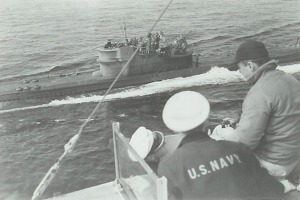
Another oddity was the number of missing German submarines, or U-boats. Even today, there are forty-five U-boats that are still considered Missing In Action, which some believe may have contributed to the number of missing Nazis at the end of the war. Some U-boats were found to be heading towards Japan, sometimes with unusual cargo. The U-285 was sank by a British ship in the Straits of Malacca near Malaysia on September 23rd, 1944 and was carrying mercury in zinc canisters. The U-boat U-234 surrendered on May 14th, 1945 after Germany’s surrender and was carrying two Me-262 jet fighters and 560 kilograms of uranium oxide bound for Japan. However, numerous U-boats ended up in South America well after Nazi Germany had surrendered. U-530 surrendered in Argentina on July 10th, 1945, U-977 surrendered in Argentina on August 17th, 1945, etc.
Even prior to World War II, the Nazis had been interested in the South Pole. In late 1938 and early 1939, Nazi Germany had sent an expedition to an area known as “Neu Schwabenland” (also called New Swabia) in Antarctica which was supposedly a scientific expedition funded and ordered by the Nazi government. However, the Kreigsmarine (the German navy) had also intended to explore the possibility of establishing a military base there to aid the submarines and ships in the event of war. The Nazi presence in Neu Schwabenland was basically irrelevant when WWII broke out, although certain pieces begin to fall oddly into place. Admiral Karl Dönitz, the Commander-in-Chief of the Kriegsmarine (considered one of Hitler’s favorite and most trusted branches of the Wehrmacht), was selected by Adolf Hitler to succeed him as the leader of Nazi Germany in the final moments before his suicide. Dönitz also had extensive knowledge of Germany’s top-secret weapons programs, such as jet aircraft, the V2 rockets, atomic weapons, the rumored Die Glocke project, etc. and was second only in this respect to Hans Kammler of the SS.
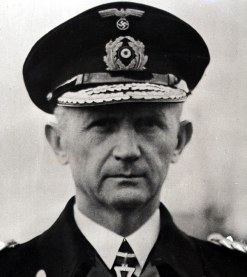
Also at several points, Dönitz made reference to some strange developments involving the Kriegsmarine that were never exactly made clear. In 1943, Dönitz stated “the German submarine fleet is proud of having built for the Fuhrer, in another part of the world, a Shangri-La on land, an impregnable fortress.” In 1944, he said “the German Navy will have to accomplish a great task in the future. The German Navy knows all hiding places in the oceans and therefore it will be very easy to bring the Fuhrer to a safe place should the necessity arise and in which he will have the opportunity to work out his final plans.” Later on during the Nuremberg Trials, Dönitz again made a strange remark when he spoke of an “invulnerable fortress, a paradise-like oasis in the middle of eternal ice.”
These statements all add up to something quite strange. Firstly, why would the Kriegsmarine be involved in constructing something at all, when a project of such importance would likely fall to the SS or Albert Speer’s department? Second, why did Dönitz refer to it with such high regard? At one point he compares it to Shangri-La, a utopian city from the fictional novel Lost Horizon which depicted it as being somewhere in Tibet, yet another time he compares it to a fortress most likely located in Antarctica. This may suggest that the Kriegsmarine had in fact established some kind of base in Antarctica, as it would explain the numerous U-boats that surrendered in South America months after Germany’s surrender. Even Allied intelligence came to believe that the U-boats had made voyages to Antarctica before surrendering in Argentina, although what their exact purpose was remains unknown.
Today, there is little evidence (at least officially) to confirm or suggest that there was or continues to be a Nazi base in Antarctica, but these two major factors seem to strongly suggest something of great importance occurred in the polar region following WWII. First is the large amount of U-boat activity and the number of still-missing U-boats, and Operation Highjump itself. If the U.S. Navy wanted to test its equipment in frigid conditions for a possible war with the Soviets, then wouldn’t it make more sense to test it in the North Pole, which is much closer to Europe where the conflict was expected to take place? Also, with an occupation of Germany, Japan, and a looming Cold War with the Soviets, why was it such a priority to launch an expedition into Antarctica so soon with so much men and material?

The U.S. Navy would’ve had to fight the Soviets in a possible World War III with “tragically few ships and tragically few men,” and yet the operation was launched within a matter of weeks and included up to almost four-thousand men, planned for eight months but only lasting roughly eight weeks. It included a large number of military equipment, and even though it was scientific in nature no foreign observers were invited. Admiral Byrd even gave an interview (which can be seen here) about Antarctica wherein he stated at about roughly the seventh minute in that there were large deposits of resources such as coal and uranium in the South Pole.
There are plenty of strange and colorful theories surrounding Antarctica, but plenty of information regarding Operation Highjump seems to suggest that something was in Antarctica, and it was either important enough or dangerous enough to warrant sending a large fleet of warships there as soon as possible after the Second World War ended. And whatever it was, it managed to drive away this fleet in a manner of weeks.
Thanks for a great article.
These videos might interest you:
• Newly acquired images: Operation Highjump declassified
►https://youtu.be/5VlaStSFRhw
The Secret Land (1948) (The film mentioned in the article)
►https://youtu.be/kbwszXc5G5s
/Drumstick